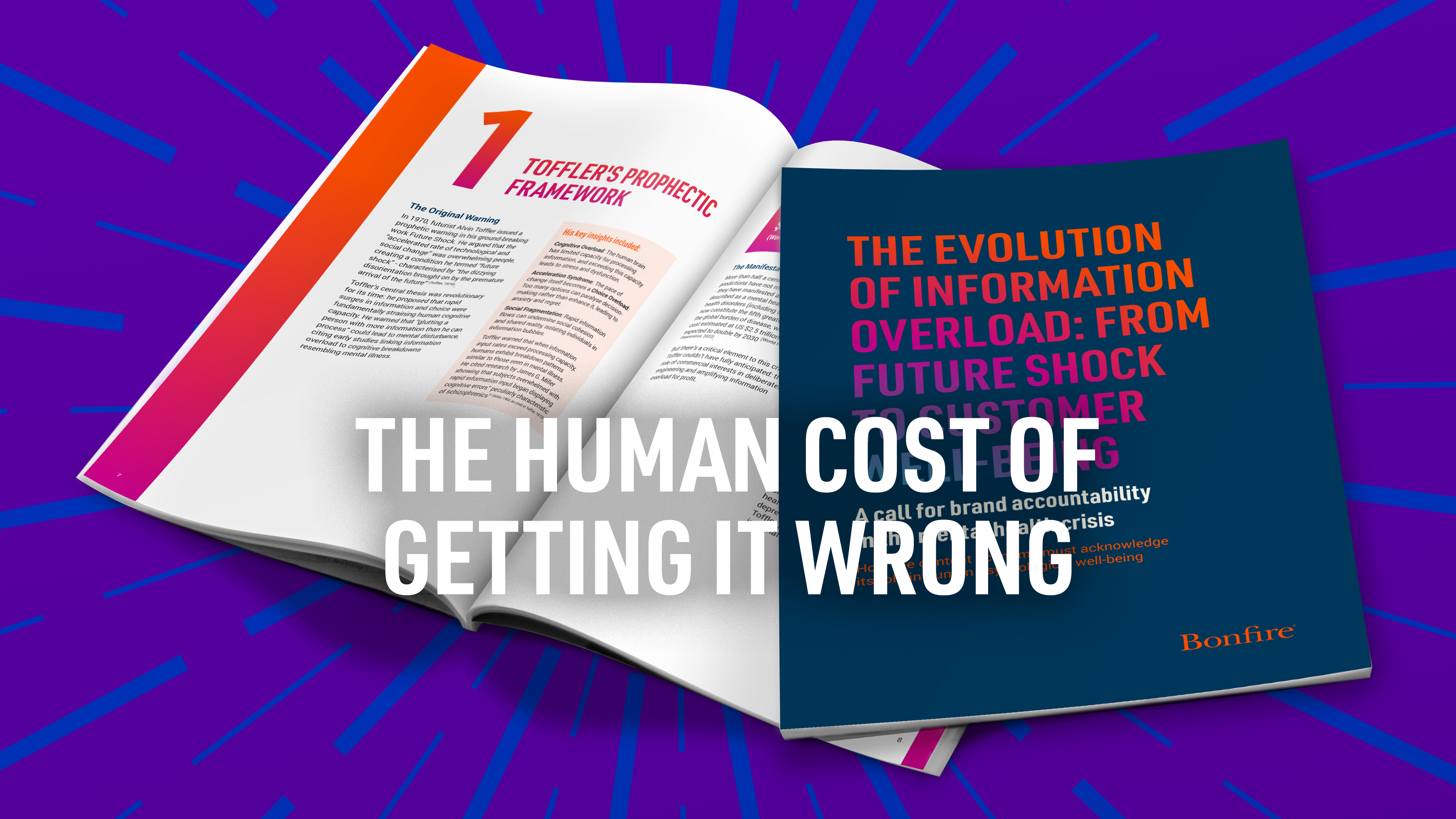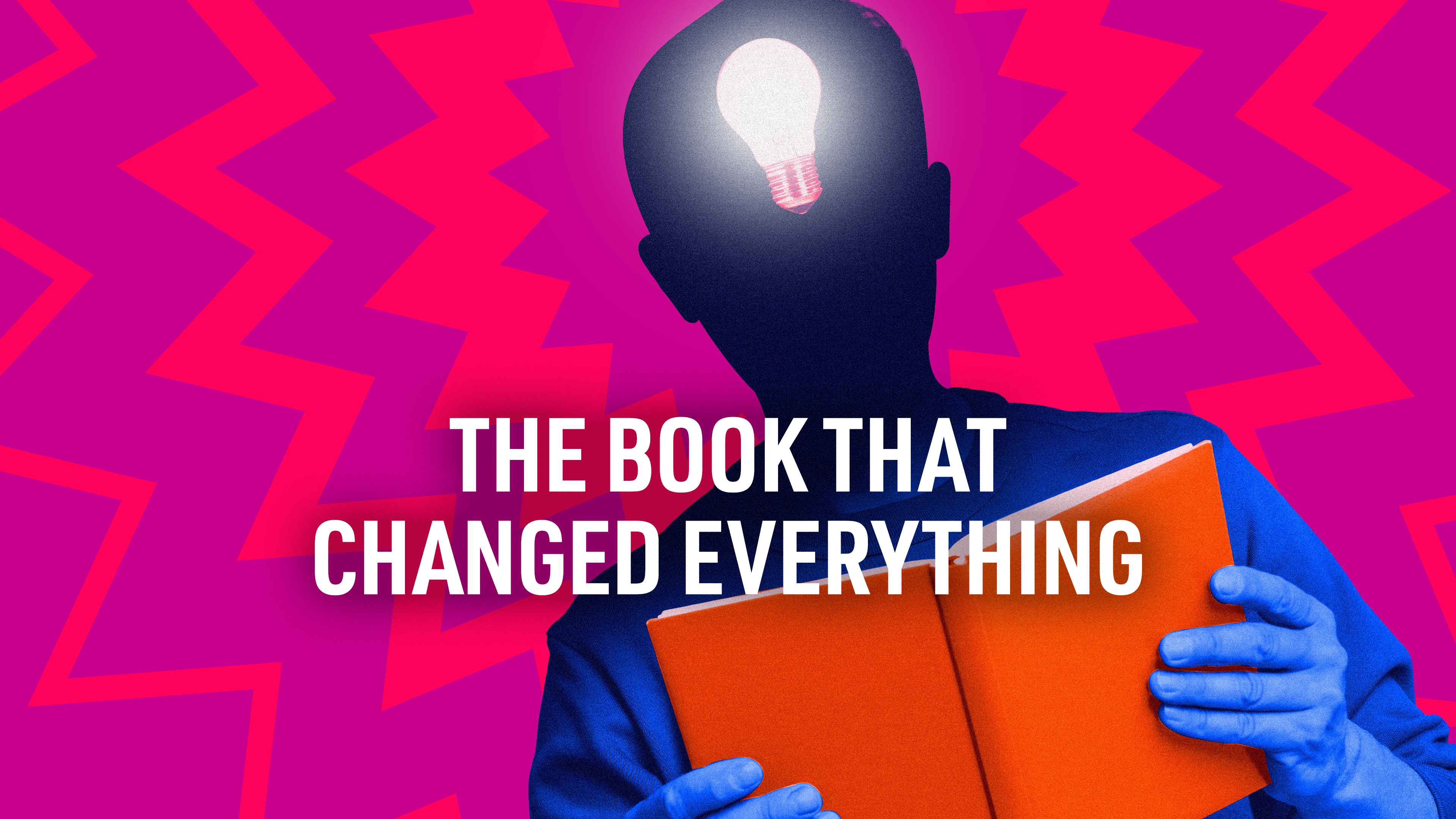4/6: The human cost of getting it wrong

What if marketing’s success was literally making people ill?
Three years into my research journey, I discovered something that fundamentally changed how I view our industry. Buried in neuroscience journals and clinical psychology studies was evidence that our ‘successful’ engagement strategies weren’t just capturing attention – they were rewiring brains in measurable, harmful ways.
The data is stark, and it’s time we faced it.
The neuroscience of engagement
When we optimise content for maximum engagement – those clicks, likes, shares, and time-on-page metrics – we’re essentially training human brains to seek constant stimulation. Neuroscientist Dr Adam Gazzaley’s research at UCSF shows that heavy social media users (3+ hours daily) exhibit neural patterns remarkably similar to those found in clinical attention disorders.
Each notification, each scroll, each ‘engaging’ piece of content triggers a small dopamine release. But here’s the problem: the brain quickly adapts, requiring more stimulation to achieve the same neurochemical reward. We’ve created digital slot machines, and we’re surprised when people show signs of addiction.
Studies from King’s College London reveal that people who consume high volumes of ‘engaging’ digital content show:
-
23% reduction in sustained attention capacity
-
2.7 times higher rates of depression
-
9% increase in depression risk for each additional hour of consumption
-
Significant increases in anxiety-related neural activity
We’re not just distracting people. We’re fundamentally altering how their brains function.
The cognitive load crisis
The average person now encounters between 4,000-10,000 brand messages daily – a 2,000% increase since the 1970s. Our brains, evolved to handle perhaps 150 social relationships, are being asked to process thousands of commercial relationships simultaneously.
Research from Carnegie Mellon University demonstrates that this constant task-switching – exactly what engagement-optimised content demands – reduces cognitive performance by up to 40%. The mental energy required to constantly filter, process, and respond to commercial messages is equivalent to losing a full night’s sleep.
Dr Sophie Leroy’s work on ‘attention residue’ shows that each interruption leaves psychological fragments that impair subsequent mental performance. When brands optimise for interruption – notifications, pop-ups, autoplay videos – they’re literally making people less capable of focused thought.
The clinical evidence
The World Health Organisation now recognises ‘digital burnout’ as a medical condition, directly linking constant information processing to measurable health outcomes:
-
301 million people globally suffer from anxiety disorders – many linked to information overwhelm
-
Teen depression rates have risen 60% since 2007, tracking perfectly with social media adoption
-
Chronic stress from decision fatigue now costs the global economy £2.5 trillion annually
-
Sleep disorders related to ‘mental hyperarousal’ have increased 40% in developed nations
These aren’t abstract statistics. These are real people whose mental health is being damaged by systems designed to maximise engagement at any cost.
The fear-engagement cycle
Perhaps most troubling is how our success metrics incentivise psychological manipulation. Research from the Centre for Humane Technology reveals that content generating fear, outrage, or anxiety achieves 6x more engagement than neutral content.
The algorithm learns: distressed humans engage more.
So we see brands – often unconsciously – gravitating toward messaging that increases rather than reduces psychological stress. Climate anxiety becomes a marketing opportunity. Social insecurity becomes a sales funnel. Financial fear becomes engagement gold.
We’ve built a machine that profits from human suffering, then celebrates the metrics that measure it.
The trust collapse
The psychological impact creates commercial consequences. Edelman’s 2024 Trust Barometer shows trust in information itself is collapsing across all demographics. When 73% of people feel ‘overwhelmed by crises’, they stop believing anyone – including brands trying to help.
This isn’t just an ethics problem. It’s a business crisis.
Customer acquisition costs have increased 200% as people actively avoid commercial messages. Ad blocker usage is up 280%. The very success we’ve optimised for is making our audiences immune to our efforts.
The economic reality
Mental health disorders now cost the global economy more than cancer and diabetes combined. Productivity losses from attention fragmentation exceed £400 billion annually in the UK alone. The human cost of our engagement economy has become a measurable drag on economic growth.
Yet our dashboards still celebrate increased time-on-site, higher engagement rates, more frequent touchpoints. We’re optimising for metrics that correlate with societal harm while wondering why trust and loyalty decline.
Breaking points
The research reveals clear tipping points where engagement becomes genuinely harmful:
-
More than 3 daily brand interactions per person creates measurable stress
-
Content designed for fear/urgency increases cortisol levels by 23%
-
Decision architectures with more than 7 options cause decision paralysis
-
Notification frequencies above 12 daily create clinical anxiety symptoms
These aren’t theories. These are measurable thresholds where marketing becomes a public health issue.
But some brands are choosing differently
In researching this crisis, I discovered something encouraging: brands that prioritise human wellbeing over engagement metrics often achieve superior commercial results. They’ve found ways to be extraordinarily successful without contributing to the problem.
These brands share something that traditional frameworks miss – a consciousness of their impact on human mental states that transforms everything about how they operate.
Questions for reflection:
-
What would your content strategy look like if you measured psychological impact alongside commercial impact?
-
How might your brand perform if it helped reduce rather than increase cognitive load?
-
What changes if marketing success means making people’s lives genuinely better?
The evidence is clear: our current definition of success is literally making people ill. But there’s another way forward – one that benefits both human wellbeing and commercial performance.
You can download and read a copy of our research findings here
More to come.
This article draws on research from over 50 sources including neuroscience studies from UCSF and King’s College London, WHO mental health reports, Carnegie Mellon cognitive research, and the Centre for Humane Technology. Full citations will be available in my upcoming research paper and following white paper.
ARE YOU READY TO UNCOVER YOUR
EXTRAORDINARY?
Let’s unleash your extraordinary today!










